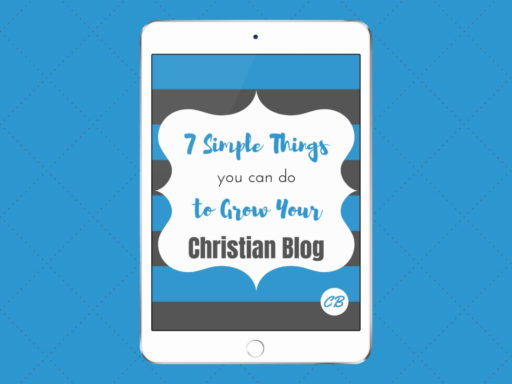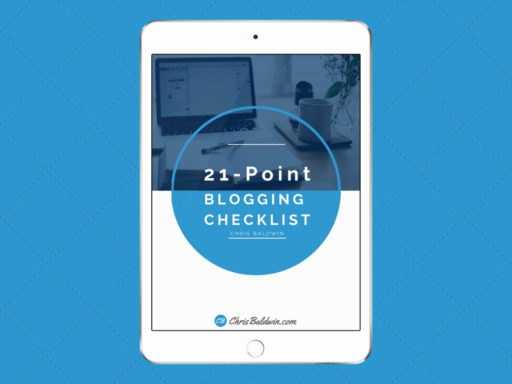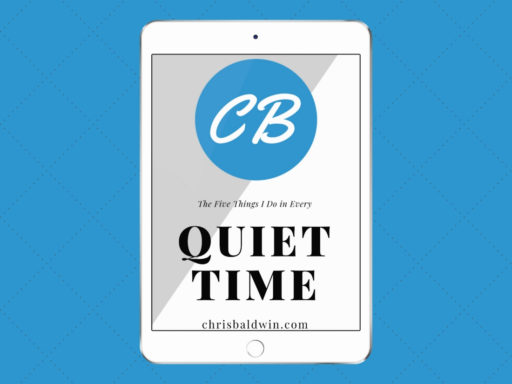There’s one word that really separates professional bloggers from amateur bloggers. I know what you’re thinking…but its not money. True, professional bloggers make money whether through advertising space, affiliate marketing, selling products, etc, but they’re only able to monetize their blog because of one word. That word is “audience.”
They have an audience. An audience of loyal ideal readers that know, like, and trust them. Now…the question becomes…how do you grow an audience?
Here’s the answer. You grow a loyal audience by publishing good consistent content to a niche audience.

Why Publish Consistently?
Publishing consistently is important because your ideal reader will learn your schedule. They’ll start to check your blog on the days you post.
Let’s say you publish a new post every Wednesday, then on Wednesday your ideal readers go to your blog…expecting your new post. When your site loads and your post is there, you’ve met their expectations and they begin to trust you.
Over time that trust builds and they become loyal ideal readers. Attracting an audience of loyal ideal readers is why you publish consistently. Developing a blogging habit is how you publish consistently.
There are four steps to developing a blogging habit. First, have a plan. Next, keep track of your progress. Third, grow before you increase. Finally, give yourself grace and time. Let’s take a look at each of those steps and how they fit together.
Have a Plan
Make a plan. Plan when you’re going to write, when you’re going to edit, and when you’re going to publish. I’d also recommend grabbing a piece of paper and writing out why you’re blogging. What is the purpose of your blog?
Knowing this will not only help you prepare better content for your ideal reader, but it will also help you keep going on days you don’t feel like writing. Knowing why you’re doing something helps ensure you accomplish that goal.
Therefore, make the plan and write it out. Plan to work on your blog daily…even if its just for an hour. Doing something daily converts the action into a habit.
If you’re just starting to blog, plan on publishing one new post a week. Knowing this, let’s set up a writing schedule. Lets say you want to publish your blog post every Thursday.
Monday
On Monday spend one hour outlining your post. This includes doing research, crafting your title, the problem you’re solving, and the keywords for SEO.
Make sure every post you write solves a problem. For instance, this post was written to help you develop a blogging habit so you’ll grow an audience of loyal ideal readers.
On Monday, write down what problem your solving and a list of everything your reader needs to know in order to solve that one problem.
When you finish drafting your list of everything that needs to be solved, look over that list to see what key words need to be used for SEO purposes. For example, the keyword phase for this post is “Blogging Habit.”
Next, use the problem your solving and the keywords you selected to craft a title for your post.
Finally, outline your post.
Tuesday
On Tuesday, write. Thats it, just write for one hour. Don’t worry about editing. Editing uses a different part of the brain then writing. So when you write, just write. Do not edit as you go. You can always edit later, but you cannot edit a blank page.
Use the outline you created on Monday. Fill in the information your ideal reader will need in order to solve their problem. One of the first questions I’m always asked is “How many words should be in a blog post?” The answer is…as many as it takes to solve your reader’s problem. No more, no less.
You do need at least 300 words so Google doesn’t categorize it as thin content. I’d set a goal for at least 800 to 1200 words. This post is a little over 2000 words. If you go for a long word count, make sure you format it well, which I’ll address next. Longer post are better for SEO, but not always better for readers.
If publishing a 2000 word post once a week is too much…then don’t do it. Write 800 to 1200 word posts. Consistency is more important than word count.
Wednesday
Then on Wednesday, spend one hour editing and formatting your post. This includes editing for grammar and style, formatting the post to make it easier to read, and adding images, a Click to Tweet, etc.
Make sure to break up the post with headings, pictures, etc. Also, keep your paragraphs short. Remember, many of your readers will be reading your post on their phone, so avoid large paragraphs. I try to keep my paragraphs to two or three sentences.
But sometimes, my paragraphs are only one sentence, which is fine.
Thursday
Next, on Thursday, publish. Spend an hour on Thursday marketing your post. Sharing your post in email, Facebook, Instagram, etc.
Do not skip this step. You have to actually go out and find your ideal readers. Share your post to all your social medias, tell your friends, email your list. Let people know a post is up.
When it comes to email, I already send out a couple of emails each week.
I send out a Christian devotional on Mondays for those who went through my free Quiet Time Challenge and I send out an email on Wednesdays with blogging tips and tools for those who download my free 21-Point Blogging Checklist.
Because I already email segments of my list throughout the week, I send a digest email every Friday with links to the content I published that week.
For email management, I use a service called ConvertKit…and love them. You can check them out here. They offer a free trial so check them out if you’re serious about growing your email list…which you should be.
Friday
Finally, Friday, spend one hour either brainstorming new ideas for future posts or increasing your knowledge about the craft of blogging.
When brainstorming new ideas, I like to use mind mapping. I have my overall topic in the middle—Helping Christian bloggers create, grow, and leverage their online platform for the Kingdom.
Then, I branch out with topics that need to be covered in order for my ideal readers to reach the ultimate goal…leveraging their online platform for the Kingdom.
What is your main topic? What is your blog’s purpose? Write the answer in the middle. Branch off from there with topics that need to be covered.
Here’s what the branch looks like for this post.

Start with your blog’s main purpose and then narrowed it down to one topic. Spend some time each week doing this and you’ll never run out of topic ideas.
Also, spend some time researching the craft of blogging. Do some research and learn about SEO, formatting, building an audience, etc. This website is a great place to start. Running a blog is like ruining a business…so learn how it works.
I won’t go on further about the need to learn because you’re already doing it. You’re reading this post.
Grow Before You Increase
As you grow in your new blogging habit, you can increase the time. Maybe you want to spend two to three hours per day working on your blog…if so, you can be writing two or three post at the same time.
Using the same plan we created above, you’d spend Mondays on researching your topics, Tuesdays on drafting, Wednesdays on editing, Thursdays on marketing, and Fridays on brainstorming and learning.
Publishing multiple posts a week will have the exact same schedule, except you would not be marketing both posts on the same day, Thursday would be spent marketing one post and writing the sales copy for the others.
The sales copy is the words used in your social media post and emails promoting your new content. That way you’d have everything ready to post on the day you publish your other blog posts.
I like to be at least one week ahead. So I’d write out my sales copy for a posts scheduled to be published the following week. For example, lets say you publish on Tuesdays and Thursdays.
On Thursday you would both publish and market Thursday’s blog post (which should take less than 10 minutes) and write your sales copy for the posts scheduled to be published the following Tuesday and Thursday.
Keep Track
One way to help achieve your goals is to keep track of the progress. When developing a blogging habit, keep track of how well you’re doing. The more you post consistently the easier it becomes. Just because blogging is work doesn’t mean it has to be difficult.
As you track your progress, keep a list of what’s working and not working. By doing this, you’re creating your own workflow. A workflow is a system to system to achieve consistent results. For example, part of my workflow is going through my 21-Point Blogging Checklist.
This checklist helps me create consistent results as I write, publish, and market each blog post. Get a copy of my 21-Point Blogging Checklist by clicking below. As your workflow develops, the habit of blogging becomes much easier.
Here’s a great way to keep track of your progress, which I use to keep track of my blogging. Put up a calendar and then each day you finish your blogging task cross out that day with a red “X.”
Then on the days you do not finish your blogging task, cross out that day with a black “X.” As time goes on you’ll see a chain a red Xs, which your goal then becomes not to break the chain. As the chain grows longer, you’ll gain confidence…you’re winning at your goal.
You’re developing a consistent blogging habit that will cause your blog and audience to grow.
Remember, consistency is one of the most important attributes of a successful blog. When you show up each week at the same time on the same day, you begin to attract loyal ideal readers.
Attracting loyal ideal readers is why you publish consistently. Developing a blogging habit is how you publish consistently. Finally, as you develop your blogging habit, give yourself some grace and time.
Give Yourself Grace & Time
It takes time to form a new habit; therefore, give yourself grace. If you don’t finish your blogging tasks one day, don’t beat yourself up. Just pick it back up tomorrow. When the chain breaks, begin a new chain.
Most habits have a bad connotation; however, this is a habit you can be passionate about and is a huge step in building a successful blog. Therefore, I ask that you give yourself some grace and time.
The Day After Perfect
The most important day in any habit is the day after perfect. In his book Finish, Jon Acuff writes, “The day after perfect is what separates finishers from starters.” Our finish line is an audience of loyal ideal readers.
So…what is the day after perfect? The day after perfect is the day after you forget or chose not to complete your blogging tasks. It’s the day after perfect no longer exist.
The day after perfect is the most important day because it’s on this day you must choose to keep going. Too many people decide blogging is just not for them the moment it’s no longer “perfect.” When you miss a day, keep going. Pick it back up tomorrow. Start again. Start publishing consistently again next week.
Truth is, it’s not always going to be “perfect.” If you desire to develop a blogging habit and watch it grow into an audience of loyal ideal readers, you’re going to face the day after perfect—likely more than once. What you do on this day makes all the difference. Keep going. Give yourself some grace and keep moving.
It Takes Time
Give yourself some time. Don’t start by trying to publish everyday. Maybe start with only one post a week. As you develop your workflow and blogging habit, you can increase to two post a week…and then maybe three. The point is, don’t try and do too much at the beginning. Work your way into it.
If your goal is to eventually be publishing on Monday, Wednesdays, and Fridays, then just start with Mondays. When your workflow is established and you further develop your blogging habit, then add on Wednesdays.
Finally, when you are firing on all cylinders and are consistently publishing on Monday and Wednesdays, then you can add Fridays.
Conclusion
If you want your blog to (1) make an impact and (2) generate an income…you need to grow an audience. You grow a loyal audience by publishing good consistent content to a niche audience. Doing this will attract loyal ideal readers, which is why you publish consistently. Developing a blogging habit is how you publish consistently.
There are four steps to developing your blogging habit. First, have a plan. Next, keep track of your progress. Third, grow before you increase. Finally, give yourself grace and time.
If you want to use my workflow, get the 21-Point Blogging Checklist. This is my ultimate checklist designed to help you consistently write, optimize, and market every post you write. You can get it for free by clicking below.
Get the FREE Checklist
Question: I’d love to know your blogging plan. Share your workflow and how you plan to develop your blogging habit in the comments below.







